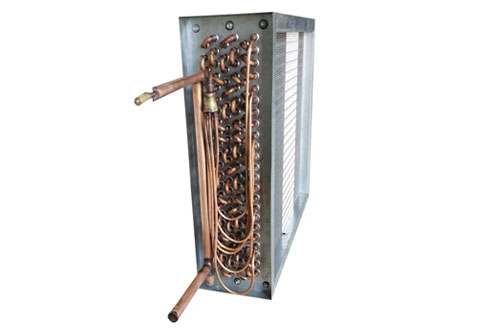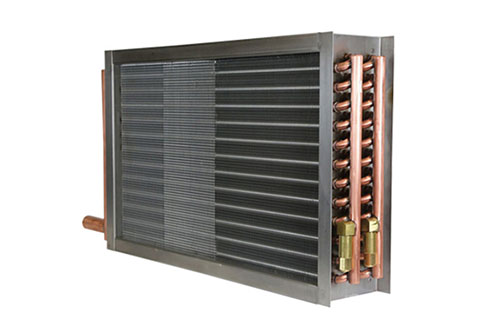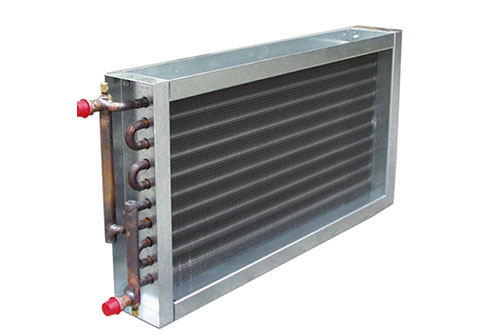TYPE- FC (FLUID COIL)
Hot water coils and chilled water coils are often viewed as completely different coils; however, a water coil is equally capable of handling hot water and chilled water.• The construction of hot water coils and chilled water coils is similar, including tube diameter, fin design and wall thickness.•
A hot water coil typically has one or two rows, while a chilled water coil has three or more rows.• Fluid pressure drop and fluid velocity are critical to the operation and longevity of water coils.• Chilled water coils are often used for comfort cooling, dehumidifying, process cooling and heat reclamation.• Hot water coils are often used for preheating, reheating, comfort heating, booster heating, waste heat reclamation, and fluid process heat.
Elementary Surface
Round seamless copper tubes are expanded using hydropneumatics water expansion system into the fin collars of the secondary surface. The hydropneumatics water expansion system provides a permanent metal-to-metal bond for efficient heat transfer. Tubes are staggered in the direction of airflow.
Secondary Surface
Corrugated aluminum or copper plate type fin that is die- formed. Fin collars are full-drawn to provide accurate control of fin spacing and maximum contact with tubes.
Headers
Seamless copper with die-formed holes that provide a parallel surface to the coil tube for strong brazing joints. Standard 1/8” brass female pipe thread (FPT) vent and drain with optional 1/2” or 3/4”. All circuiting is designed to gravity-drain with the coil mounted vertically and tubes running horizontally.
Connections
Red Brass Schedule 40 male pipe thread (MPT) std. with optional copper female pipe thread (FPT), sweat and Victaulic Red Brass available.
Casing
Casing is die-formed with 1½” flanges to permit easy stacking and mounting. Intermediate tube supports are supplied on coils over 44” fin length with an additional support every 42”.
Testing and Performance
All coil assemblies are leak tested under water with nitrogen at 315 PSIG. Standard construction is suitable for 250 PSIG and up to 300 degrees F.




